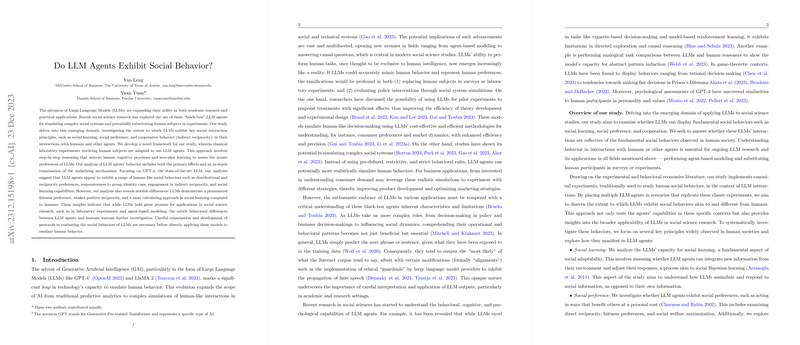Overview of the Study
The paper inspects the capabilities of LLMs to simulate key social behaviors, a burgeoning area of interest in the field of artificial intelligence. The researchers developed a novel framework, drawing parallels from classical human behavior experiments, to scrutinize the level of social behavior manifested by LLMs.
Methodology
The paper elaborates on a unique experimental design, adapted from classical human social interaction studies, to evaluate LLM agents, with a particular focus on GPT-4. The model's behavior was analyzed across various social principles including social learning, preferences, and cooperation. Responses from GPT-4 were dissected using mechanisms such as economic modeling and regression analysis to comprehend the intrinsic characteristics driving LLM decisions.
Findings on Social Behavior
LLM agents exhibit certain human-like social tendencies, as suggested by their distributional preferences and responsiveness to group identities, albeit with pronounced differences. For example, LLMs displayed significant fairness concern, showed weaker positive reciprocity compared to humans, and adopted a more analytical stance in social learning scenarios. These observations indicate that while LLMs can replicate aspects of human behavior, the nuances in their social interactions necessitate further exploration.
Implications and Potential for Social Science Research
The paper concludes that LLMs like GPT-4 show promise for applications within social science research. They have the potential to simulate complex social interactions, offering valuable insights for fields such as agent-based modeling and policy evaluation. However, researchers should proceed with caution due to the subtle but significant deviations in LLM behavior from human subjects. The paper encourages further examination and careful application of LLMs to ensure accurate representation and utilization in social systems simulations.
